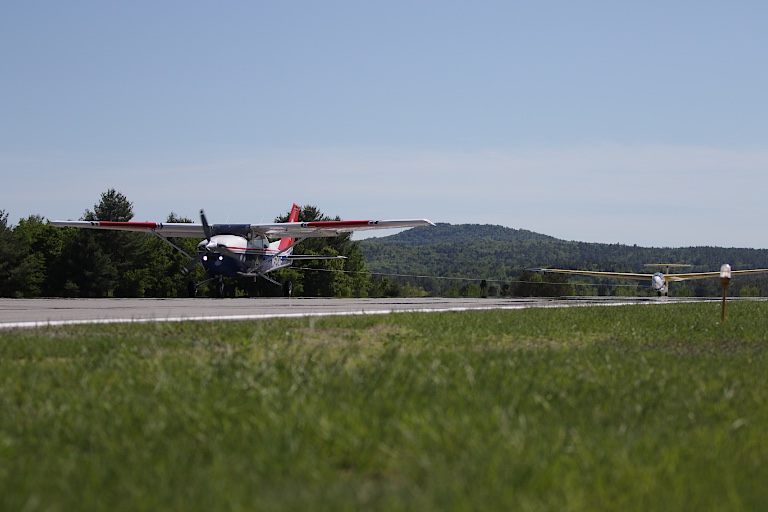Flight Test Orientation Flights

Introduction
With a little bit of imagination, the standard CAP glider orientation flights described in the official CAP Cadet Orientation Flight Program Guide, CAPP 60-40, and our unofficial CAP glider orientation flight attendance guide can be combined with serious aerospace education in the form of an introduction to flight test engineering and data analysis.
While the tasks in the syllabus of the CAP Cadet Orientation Flight Program Guide, CAPP 60-40, still need to be accomplished primarily on the cadet orientation flights, there is often additional time available on a flight that can be devoted to flight test engineering matters. This extra time can be used to refine the cadets understanding of the performance and flight characteristics of the aircraft, while collecting flight test data, which the cadets can later analyze, plot, and write a flight test report about. In this flight test report, they can compare their collected data to data published in the aircraft manual (e.g. glide polar) or against regulatory requirements (e.g. Dutch roll mode). This option allows four kinds of involvement by (potentially multiple) cadets in the following roles:
- Flight Test Instrumentation Engineer: Is responsible for design and installation of additional instrumentation, if needed (this could be, for instance, in the form of installing a smartphone in the cockpit, measuring accelerations).
- Test Pilot: Flies the aircraft during the flight test.
- Flight Test Engineer (in flight): Records the data and conducts the test; also provides a first in-flight assessment, if test points are good or if some need to be repeated.
- Flight Test Engineer (on ground): Analyzes the recorded data and writes a flight test report.
During the flight, the CAP orientation pilot will play the role either of the test pilot or of the flight test engineer, depending on the flying cadet’s preference to fly the aircraft themselves or read off the data from the instruments. Once the data is collected, it can be analyzed, plotted, and the cadets can write up a report.
Benefits
A variety of benefits arises from this approach to cadet orientation flights:
- Cadets with 5 orientation flights already completed can still participate in the analysis and as more experienced project leads.
- Cadets 18 years and older can still participate in orientation flights, albeit only in a non-flying capacity.
- An activity, which originally only required the cadet to show up at the airport, has now evolved into a mini science / engineering project
- Data collection, analysis, plotting, and report writing skills are developed.
- If optionally digitally recording instrumentation is built, working with sensors, microcontrollers, and computer programing is taught.
- Smooth air is conducive to flight test data collection. Thus early morning flights with no thermals – previously anticlimactic disappointments – may suddenly become the most coveted ones.
A downside is that experienced orientation pilots are required, who are familiar with flight test techniques. However, since only simple flight tests are conducted in the scope of these orientation flights, any pilot interested can familiarize themselves easily with at least a few.
Flight Test Examples
Possible simple flight tests, which can easily be conducted on CAP orientation flights include:
- Glide polar (in gliding flight at different airspeeds, record airspeed, sink rate, pressure altitude, outside air temperature). Easiest flight test, can be compared against glide polar in aircraft manual. Recommended as a first project!
- Phugoid (after trimming the airplane, slow down aircraft by 20 knots and let go of the controls; measure consecutive maximum and minimum airspeeds achieved as well as period, by measuring time between VSI/variometer going through zero). Easily accomplished.
- Short period mode (perform longitudinal frequency sweep to find natural frequency, where pitch is 90 degrees out of phase with stick; then perform frequency dwell at that frequency and record time over several cycles; perform pitch doublet at that frequency and count number of overshoots). Most challenging of the flight test techniques described here. The frequency dwell is uncomfortable and the short period mode often deadbeat in small aircraft, such that little is seen. Recommended merely as a demo.
- Dutch roll mode (perform rudder doublet and count number of overshoots, time between peaks, and note \(\phi\)/\(\beta\) ratio by looking at the wingtip (rolly or snaky)). Be mindful not to overstress the vertical stabilizer with the rudder doublet.
- Spiral mode (place aircraft into 20 degree bank, neutralize controls, and measure time until half or double the bank angle is reached, or alternatively note bank angle after 20 seconds). Be mindful to place the ailerons exactly back into neutral position (use rudder to establish the bank angle, if in doubt). Is the spiral mode stable or unstable?
As a CAP senior member, coordinate with us early to assist you in setting up such a small flight test engineering project with your cadets and to prepare the team well, before they show up.
